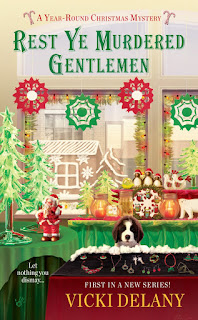As a writer, I know full well the sting of rejection. In fact, the fear of rejection is what keeps writers from putting their work out. We comfort ourselves by saying getting rejections is part of the game, that every great writer had their share of rejections, that a rejection is just one step closer to a "Yes!" and on and on. But rejections suck. Always. Even the most reassuring and empathetic rejection isn't as good as a lukewarm "You're in." Editors can be so stupid.
Recently I found myself on the other side of the submissions process and it was my job to be telling other writers, "Sorry, but no thanks." I was the co-editor for a forthcoming anthology,
Blood Business, from
Hex Publishers. This submissions process was straightforward as we accepted work by invitation only, mostly from established writers. As an editor this gave me the opportunity to see stories in a rawer state, and I was curious to see just how good even these good writers were before their work had been edited. What I kept in mind was to stand back, put aside my own my prejudices for technique, and try to take in what the writer intended. At the same time, I had to be cognizant of my role as an editor. If something didn't work it was my responsibility to say so. The results were all over the place, and we (the senior editor and I--
the royal we) tended to draw the same conclusions on every work. One writer--a former editor, not surprisingly--submitted a story that was perfect both in terms of content and copy-editing. The others stories needed developmental work, sometimes a few tweaks and sometimes a lot of revisions. We felt that a couple of submissions missed the mark completely from the point of basic story telling, disappointing since we had solicited pieces from proven writers in the genre.
We shared our editorial comments and interestingly, we learned who the real professionals are in this writing business. One of the bigger name authors took our input without hesitation and trimmed and honed his narrative into an exceptionally sharp story. Another writer took what we thought was a loose and flabby plot and tightened it into a really trim and muscular piece of work. In fact, his reworked story really nailed his premise.
I also had my turn as
The Editor, the mo-fo in charge for another anthology,
Found, the fifth such collection from
Rocky Mountain Fiction Writers. The theme was pretty catchy:
Found
Sometimes things are better off lost,
and sometimes they were never meant to disappear.
Either way, when they're found, everything changes.
Since the anthology was to promote RMFW, we accepted works only from members and through an open submissions process. The first lesson I learned was that the guidelines for word count had been much too broad, with the upper limit as 15,000 words. Besides making it more of a chore to read those longer works, it also meant that from a logistical perspective, I might have to choose less stories. We received 89 submissions. The formatting rules were detailed and conformed to industry standards. Unlike the situation at Hex Publishers, where I had leeway in how to interpret the rules, I felt that I didn't have that option with
Found. If a writer thought I had been arbitrary and unfair, then they could appeal to the RMFW board and I'd have that mess heaped on top of my other duties. So I stuck to the rules. Unfortunately, being so draconian forced me to reject some stories out of hand and there were several I was looking forward to reading. But rules are rules. The plus side was that this allowed me to whittle the list down to 54 stories. Luckily, I had 11 readers--all volunteers like me--who helped cull through that pile, and without them, my job as editor would've been a summer-long ordeal. Sorting through the works was a double-blind process as the readers didn't know who the author of the work I had passed along. Each story was read by two readers. The scoring was simple. Two meant
Yes. One meant
Maybe. Zero, the dreaded
No. My big takeaway was learning how subjective the selection process is. Out of the fifteen stories that were chosen, I could have easily picked another fifteen that were just as good.
Them's the breaks. Then came the time to send out the notices about who was in and who was out. I gave each rejection a reason about why the story fell short. Some writers replied back with thanks. But others didn't and that led to yet another lesson:
As an editor you make enemies. At the RMFW Gold Conference, several of those writers whose work I had rejected and people who usually made time to catch up now gave me the cold shoulder. Seriously, I got freezer burn.
Besides selecting works, my other tasks were copy-editing, selecting a cover, formatting, and getting published through the various venues: CreateSpace; Ingram; Kindle; Smashwords; and Kobo. Fortunately, the editor from the previous RMFW anthology stepped up to copy edit, and a writer friend with considerable design experience handled the cover and interior layouts. Both did great jobs.
The launch signing took place during the Gold Conference. Another lesson, since this was the one location were most of the contributors would attend,
Take lots of pictures! Which I spaced out. Our public reading was sponsored by the Tattered Cover bookstore at the Great Hall of Denver's Union Station, a swanky and popular after-work hang out. Not everyone there was for our reading, but I like to think that we provided a bit of literary culture to go along with their cocktails. I know I was drinking.











